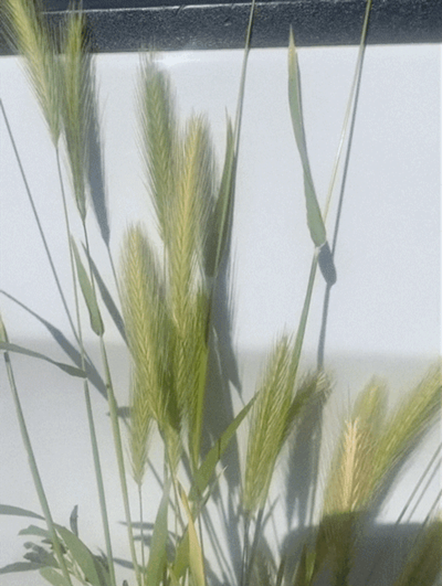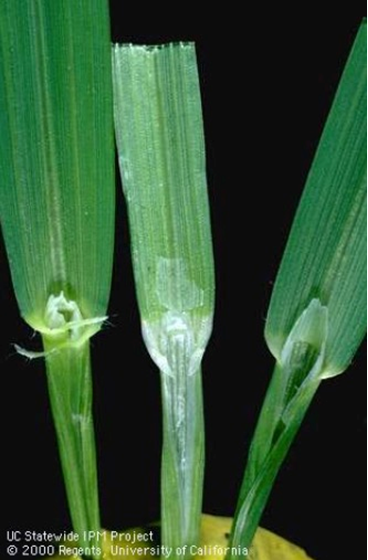
It’s unfortunately a very great season to be a plant pathologist…
We have confirmed the first sample of Fusarium wilt on lettuce submitted to the Yuma Plant Health Clinic from Yuma County. The stunted seedlings looked like any other typical case of damping-off at the seedling stage. When plated on culture media, subsequently confirmed Fusarium colonies grew abundantly from the declining plant tissues. If you’re not already on guard and scouting, this is a warning that Fusarium is active in Yuma County.
Adding on to this early alert, we’ve received a surge of submissions of young brassicas to the clinic. Several severely wilted and declining plants from around Yuma County have cultured positive for Pythium, likely as an opportunistic invader coming in on the back of all the early-season rain that brought stress to seeds and young transplants. Growers may want to consider oomycides, but only if the seedling disease is first confirmed to be Pythium. Remember, many seedling diseases caused by true fungi are indistinguishable from those caused by Pythium.
If you have any concerns regarding the health of your plants/crops please consider submitting samples to the Yuma Plant Health Clinic for diagnostic service or booking a field visit with me:
Chris Detranaltes
Cooperative Extension – Yuma County
Email: cdetranaltes@arizona.edu
Cell: 602-689-7328
6425 W 8th St Yuma, Arizona 85364 – Room 109
Over the last couple of years, we developed a prototype steam applicator for injecting steam into the soil prior to planting. The concept behind soil steaming is similar to soil solarization - heat the soil to levels sufficient to kill soilborne pathogens and weed seeds (typically 140 °F > 20 minutes). The device is principally comprised of a 63 BHP steam generator mounted on an elongated bed shaper (Fig. 1). The apparatus applies steam via shank injection and from rectangular ports on top of the bed shaper. After cooling (< ½ a day), the crop is planted into the disinfested soil.
Trial results have been very promising and reported in previous UA Veg IPM articles. In brief, the multi-year studies have shown that soil steaming provides excellent weed control (>90%), suppresses problematic soilborne diseases (Fusarium wilt of lettuce> 50%, lettuce drop > 70%) and increases crop yields (>24%).
This season, we would like to demonstrate the technique to interested growers. In addition to obtaining grower feedback on the viability of soil steaming, a second objective would be to validate our small plot research results at the field scale level. The machine can be adjusted to work with most bed configurations including 40”, 42”, 80” and 84” beds, and work with any crop, including organic crops (soil steaming is organically compliant). So far, the device has been successfully tested in iceberg lettuce, romaine, baby leaf spinach and carrot crops.
If you are interested in an on-farm demo of soil steaming, please let me know. I’d be happy to work with you.
Fig. 1. a) Band-steam applicator principally comprising a 63 BHP steam generator
mounted on a bed-shaper applicator sled. Steam applicator sled b) top view and
c) bottom view. Click here or on the image above to see the device in action.

Image by: Jim Daily
Hare Barley, Mediterranean, or Wild Barley (Hordeum murinum) has been increasing at the Yuma AZ Valley and the Mesa. This week we have received some samples for ID from our friend PCAs.
It’s a cool season annual grass native to Europe with dense stiff awned spikes. Early in the season before the flower spikes develop, they can be a very good forage but when the spikes emerge can injure the mouths, eyes, nasal passages, ears, and skin of animals.
It is found throughout California up to 3300 feet (1000 m) and inhabits agricultural land, disturbed sites, and unmanaged natural areas3. The seedheads are unbranched, awned, stems and leaves are hairless, and the ligules are membranous. The collar region and auricles can be seen in the image below from the University of CA3.
The Hordeum murinum complex is the most widespread of all the other Hordeum species, and the origin of its distribution of was Central Europe, the Mediterranean area, North Africa, and Western Asia1.

Collar region of (left to right) hare (wild) barley, wheat, and wild oat.
Photo by Jack Kelly Clark3.
References:
This time of year, John would often highlight Lepidopteran pests in the field and remind us of the importance of rotating insecticide modes of action. With worm pressure present in local crops, it’s a good time to revisit resistance management practices and ensure we’re protecting the effectiveness of these tools for seasons to come. For detailed guidelines, see Insecticide Resistance Management for Beet Armyworm, Cabbage Looper, and Diamondback Moth in Desert Produce Crops .
VegIPM Update Vol. 16, Num. 20
Oct. 1, 2025
Results of pheromone and sticky trap catches below!!
Corn earworm: CEW moth counts declined across all traps from last collection; average for this time of year.
Beet armyworm: BAW moth increased over the last two weeks; below average for this early produce season.
Cabbage looper: Cabbage looper counts increased in the last two collections; below average for mid-late September.
Diamondback moth: a few DBM moths were caught in the traps; consistent with previous years.
Whitefly: Adult movement decreased in most locations over the last two weeks, about average for this time of year.
Thrips: Thrips adult activity increased over the last two collections, typical for late September.
Aphids: Aphid movement absent so far; anticipate activity to pick up when winds begin blowing from N-NW.
Leafminers: Adult activity increased over the last two weeks, about average for this time of year.







